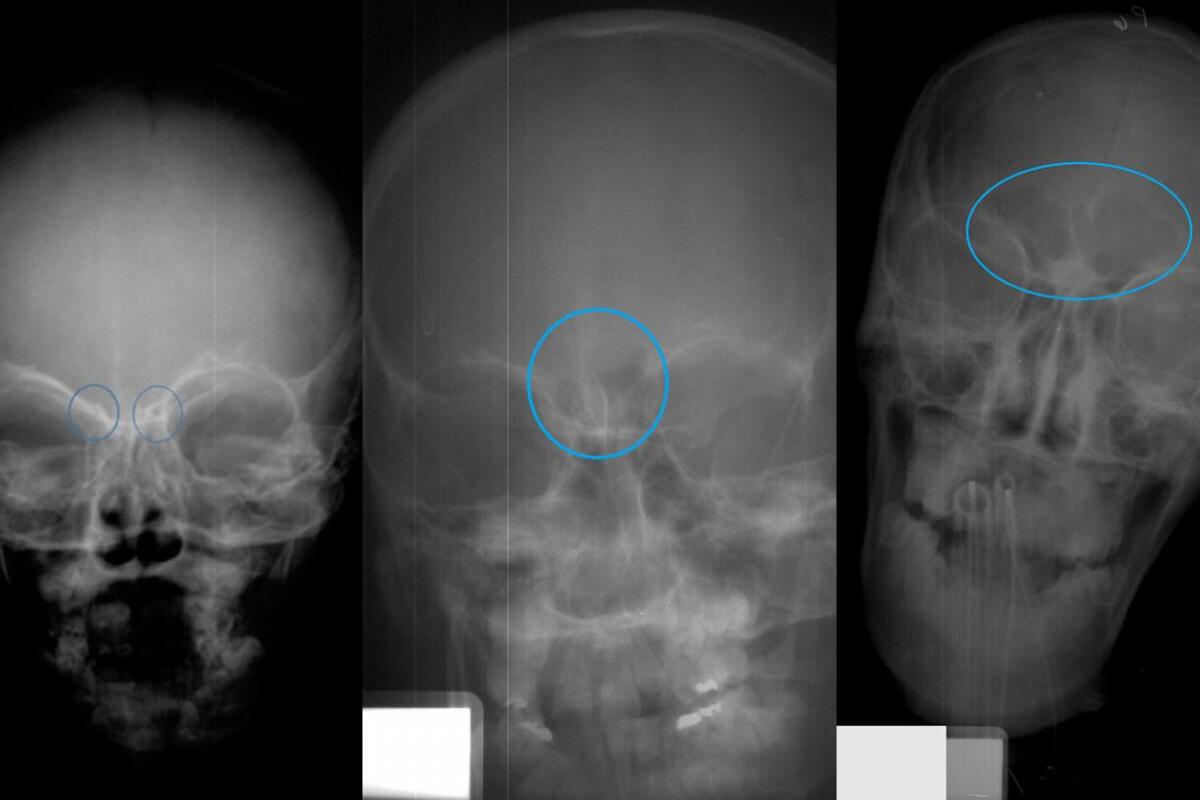Anthropologists, pathologists and other scientists may soon have a new tool to work with, when it comes to determining the age of deceased children based on their skeletal remains. Led by Prof. Ann Ross, researchers at North Carolina State University have found that the skull's frontal sinus undergoes distinct changes throughout childhood, and those changes can be matched up to approximate ages.
In order to establish the different stages of development, the scientists analyzed X-rays of 392 people of known ages, between infancy and 18 years old.
It was found that in children less than six years old, the frontal sinus wasn't detectable at all – this phase is labelled as Stage 0.
Next is Stage 1, which goes from about ages six to eight (mean age of 6.5). It sees the sinus start to appear as two small cavities with a gap between them, behind the forehead. Stage 2 follows, going from about seven to ten (mean age of eight), wherein the sinus is still two separate cavities, but they're now larger and are touching. Finally, somewhere between the ages of 12 and 18 (mean age of 16), Stage 3 sees the two cavities merge into one.
"This is a proof-of-concept study demonstrating that frontal sinus X-rays offer a viable, noninvasive technique for estimating the age range of juvenile remains," says Ross. "This approach should be particularly valuable when working with incomplete remains."
That said, the technique could also be used to ascertain the age of living children for which there are no birth records.
A paper on the research was recently published in the journal The Anatomical Record.
Source: North Carolina State University




